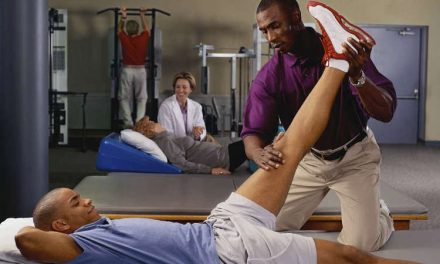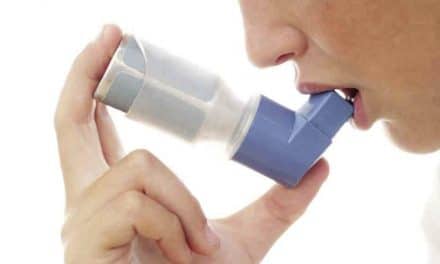What is a Herniated Disc?
People who suffer from neck or back pain, arm or leg pain, excessive weakness in the arms or legs, and abnormal functions of the upper or lower extremities such as numbness or tingling are often diagnosed with a herniated disc. The question is –
Exactly what is a herniated disc, and how is it determined if this is causing the symptoms?
An intervertebral disc is made up of an outer, fibrous ring, and a central soft portion. The disc itself receives nourishment through the motion of the vertebrae above and below it moving and “squishing” the blood and fluids through the disc. If this movement does not occur, the outer ring can dry and tear which allows the soft portion of the disc to bulge out. This is what is commonly known as a herniated disc. (Also called a slipped disc, bulging disc, disc protrusion, etc.)
Not all herniated discs cause pain or discomfort. It is when the bulge puts pressure on the exiting spinal nerve that pain, or an inflammatory reaction, will occur. It is therefore very important to have a full understanding of what is causing the pain.
What is Subluxation?
Another term important to understand in the diagnosis of a herniated disc is subluxation. Subluxation is when one or more of the bones of your spine (vertebrae) move out of position. The result can be a herniated disc. If this creates pressure on spinal nerves, problems will result. This pressure or irritation on the nerves causes the nerves to malfunction and interfere with the signals traveling over those nerves.
Symptoms of a herniated disc can be one or more of the following:
· Pain spreading over the buttocks, down the back of one thigh, and into the calf
· Pain may be in one leg (more common) or both legs
· Numbness, tingling, or weakness in the legs or feet
· Numbness, tingling, or weakness in one or both arms
· In severe cases, inability to find comfort even lying down
· Sudden aching or twisted neck that cannot be straightened without severe pain
· Bowel or bladder changes and/or numbness in the groin
Treatment for a Herniated Disc
Treatments for a herniated can range from physical therapy to anti-inflammatory medication, to cortisone shots to surgery. Because back surgery is extremely invasive, and because surgery is not always totally successful in correcting the problem, it would be wise to seek out the services of a doctor of chiropractic first. Before resorting to a surgical approach, it just makes good sense to try a more conservative procedure.
A doctor of chiropractic is trained to locate subluxations and reduce or correct them. This can be accomplished through a series of chiropractic adjustments designed to correct the vertebral subluxations in your spine. Chiropractors are the only professionals who undergo years of training to be experts at correcting subluxations. There are methods to decompress the vertebrae which allow the disc the ability to heal itself.
Early Diagnosis of a Herniated Disc
Be aware that few treatments – even chiropractic treatment – can make up for years of abuse and neglect of spinal health that many people endure. Poor nutrition, poor posture, lack of proper exercise, and even incorrect lifting methods are among the many ways the spine suffers abuse.
Early diagnosis and conservative treatment is the best way to begin correcting the pain suffered from a herniated disc. And the chiropractic approach is an excellent first choice for extended pain relief and for a healthier spine in the future!
For Chiropractors
If you want to offer top quality inversion tables to your patients who may benefit from spinal traction for home therapy consider recommending Teeter. There are definitely more expensive inversion tables which might be better for frequent use in-office therapy and inversion table demonstration, for home therapy though or for your own personal use after a long day of bending to adjust your patients Teeter makes reliable high quality products.
Inflatable cervical traction units do not require a patient sit stationary as is the case with the old over the door counter weighed pulley style units. Inflatable pillow and accordion style units may be worth having a patient try first for the sake of the cost to the patient. If they are a compliant patient who you believe will follow your instruction for home care, then a high quality well designed unit might be a better choice.
For the patients who you know will follow your instructions and lay down for a recommended period of time, this unit has adjustable incline angles of 10, 15 and 20 degrees and can provide traction with up to 50 lbs of force. It has a contouring memory foam headrest that cradles the head for maximum comfort. It’s easy for patients to use on carpet or a yoga mat, and it’s about as close as they can get to in-office cervical traction therapy, at home.
For times when adjusting a patient with rotational or other higher mass manual techniques would be contraindicated the Activator V might be just the instrument you’re looking for. It generates a force wave thrust at the touch of a button that is more comfortable for both the patient and the doctor.
Herniated Disc Article Credit: Dr. Robert D. Walcher D.C. is a graduate of Palmer College of Chiropractic West located in San Jose, California. He is the proud founder and owner of Personalized Chiropractic located in Pacific Beach. Dr. Walcher makes sure his patients get extensive education about Chiropractic and learn exactly what is going on with their nervous system. He explains precisely what needs to be done for the relief of current pain and the improvement of future health. Are you ready to feel better and to enjoy optimum health? Visit Dr. Walcher at http://www.PBChiropractor.Com. Article Source: http://EzineArticles.com/?expert=Rob_Walcher. Article Source: http://EzineArticles.com/1898531.
I’m a biologist and health writer. I’m able to draw on my technical, science, business and journalism backgrounds when researching and creating content. I’ve managed a chiropractic office where I handled; HR, inventory control, and counseling, in addition to doing the patient education. I’m an experienced public speaker and I’ve helped built large communities of people interested in health and plant-based diets. My laboratory work includes genetic analysis and I also do the grant writing and administration, online fundraising and social media. In the past I was the team manager for invasive species field operations. I’m also a regular volunteer for international coastal cleanup.




